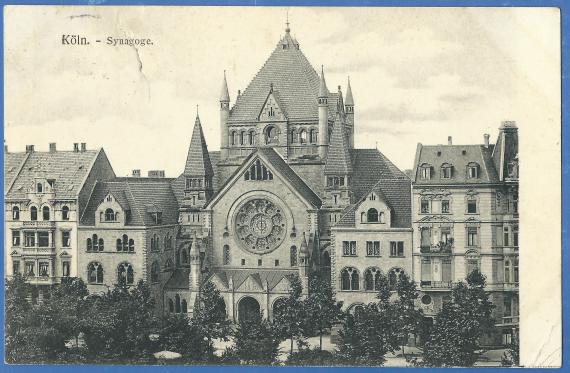Roonstraße 50
50674 Köln
Germany
The synagogue in Roonstra;e looks back on an eventful history: completed in 1899, it shaped both the cityscape of Cologne and the developments within the city. In accordance with the reforms of the 19th century, the bima, the raised lectern for the weekly reading of the Torah, was no longer located in the center of the room, but moved to the east side near the Torah shrine. Another characteristic of the reform-oriented orientation of the congregation members was the desire to install an organ; this led to a break with the Orthodox members.
During the Nazi regime, the synagogue congregation developed into a central place of help and support for the persecuted Jews of Cologne. Nevertheless, they had to watch defenselessly as their synagogue was set on fire and the objects of worship were damaged or stolen. The Nazi authorities declared the building complex behind the synagogue a ghetto house in mid-1941. Among those forcibly committed and later deported were the last Kölner Rabbi Dr. Isidor Caro and his wife Klara.
In the ruins of the synagogue Üsurvivors of the Shoah founded in April 1945 a new congregation. The inauguration of the rebuilt synagogue took place in 1959 in the presence of Chancellor Konrad Adenauer and Rabbi Zvi Asaria from Köln.
The Roonstra;e continues to be the cultural and religious center and the official seat of the synagogue community of Köln, which today has about 5,000 members.

